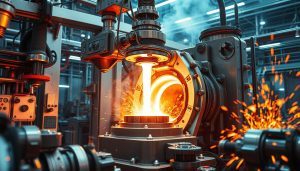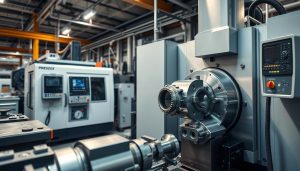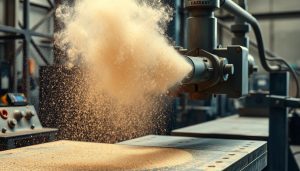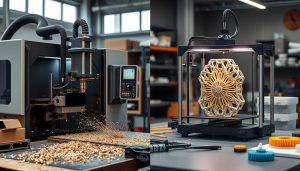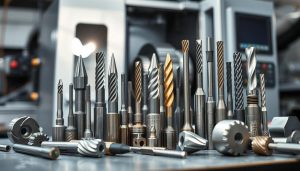In the dynamic world of engineering manufacturing, the properties of metals play a pivotal role in shaping the design, performance, and production of a wide array of products. From the intricate components of high-tech electronics to the sturdy structures that define our built environment, a deep understanding of metal properties is essential for engineers and manufacturers to optimize their processes and deliver superior outcomes.
This comprehensive guide will explore the crucial characteristics of metals that influence material selection, processing techniques, and overall product performance. By delving into the various mechanical, thermal, electrical, and magnetic properties of metals, we will equip you with the knowledge necessary to navigate the complexities of engineering manufacturing and make informed decisions that drive innovation and success.
Introduction to Metal Properties in Manufacturing
Understanding the intrinsic characteristics of metals, known as metal properties, is essential in the realm of engineering and manufacturing. These properties dictate how materials behave under various conditions, influencing the suitability of a given metal for specific applications, production methods, and the overall performance of the final product. Let’s explore the key categories of metal properties in manufacturing and their significance in the industrial processes.
What Are Metal Properties and Why Do They Matter in Manufacturing?
Metal properties are the inherent characteristics that define a material’s behavior, such as strength, ductility, thermal conductivity, and electrical resistance. These material characteristics play a crucial role in manufacturing, as they determine the most appropriate production techniques, the performance of the final product, and the overall efficiency of the industrial processes.
Key Categories of Metal Properties
The main categories of metal properties in manufacturing include:
- Mechanical Properties: Factors like strength, ductility, toughness, and hardness that influence a metal’s ability to withstand different types of stress and deformation.
- Thermal Properties: Characteristics such as thermal conductivity and thermal expansion that affect how a metal responds to heat and temperature changes during various industrial processes.
- Electrical and Magnetic Properties: Attributes like electrical conductivity and magnetic permeability that determine a metal’s suitability for applications involving the flow of electric current or magnetic fields.
By understanding these key metal properties in manufacturing, engineers can make informed decisions about material selection, design, and production methods, ultimately leading to more efficient and effective industrial processes.
Mechanical Properties of Metals
Understanding the mechanical properties of metals is crucial in engineering manufacturing. These properties, including strength, ductility, toughness, hardness, and elasticity, play a vital role in determining how materials will perform in various applications.
Strength: Types and Importance in Manufacturing
Metal strength is a critical factor in manufacturing, as it determines a material’s ability to withstand external forces without deformation or failure. There are several types of metal strength, such as tensile strength, compressive strength, and yield strength, each with its own significance in different manufacturing processes. Engineers must carefully consider these mechanical properties when selecting the right metal for a specific application.
Ductility and Toughness: How They Affect Performance
Ductility and toughness are two other key mechanical properties of metals. Ductility refers to a material’s ability to be drawn into a wire or rolled into a thin sheet without breaking, while toughness measures a material’s resistance to fracture under impact or sudden loading. These properties directly impact the performance and durability of manufactured products, and they are crucial considerations in industries like automotive, aerospace, and construction.
Hardness and Elasticity: Applications in Engineering
Hardness and elasticity are also important mechanical properties of metals. Hardness measures a material’s resistance to indentation or scratching, while elasticity is the ability to deform under stress and then return to its original shape and size. These properties are particularly relevant in applications where wear resistance, surface finish, or the ability to withstand repeated stress cycles are important, such as in cutting tools, gears, and springs.
| Mechanical Property | Importance in Manufacturing | Relevant Industries |
|---|---|---|
| Strength | Determines a material’s ability to withstand external forces without deformation or failure | Automotive, Aerospace, Construction |
| Ductility | Allows a material to be drawn into wire or rolled into thin sheets without breaking | Automotive, Electronics, Metalworking |
| Toughness | Measures a material’s resistance to fracture under impact or sudden loading | Automotive, Aerospace, Construction |
| Hardness | Determines a material’s resistance to indentation or scratching | Cutting Tools, Gears, Springs |
| Elasticity | Allows a material to deform under stress and then return to its original shape and size | Springs, Shock Absorbers, Structural Components |

“Mechanical properties are the foundation upon which engineering design and manufacturing are built. Understanding these properties is essential for creating innovative, high-performance products.”
Thermal Properties of Metals
Thermal properties play a crucial role in many manufacturing processes. Understanding the thermal conductivity and thermal expansion of metals is essential for optimizing production techniques and ensuring the performance of final products. These thermal characteristics not only impact the behavior of materials during manufacturing but also influence the material selection process across various industries, from aerospace to automotive and electronics.
Thermal Conductivity and Expansion in Manufacturing Processes
Thermal conductivity, the ability of a material to transfer heat, is a critical factor in many manufacturing processes. Metals with high thermal conductivity, such as copper and aluminum, can quickly dissipate heat, making them ideal for applications like heat sinks and electronic components. Conversely, metals with low thermal conductivity, like stainless steel, can be better suited for applications where heat retention is important, such as in furnaces and ovens.
Thermal expansion, the change in a material’s size in response to temperature changes, is another crucial thermal property that affects manufacturing. Precise control of thermal expansion is necessary for ensuring the dimensional stability of components, particularly during processes like welding, casting, and heat treatment. Careful selection of metals with appropriate thermal expansion coefficients can help minimize distortion and maintain tight tolerances.
Impact of Thermal Properties on Metal Selection
The thermal properties of metals play a significant role in the material selection process for various industries. In the aerospace sector, for example, the low thermal expansion and high thermal conductivity of aluminum alloys make them a popular choice for aircraft components. Similarly, in the automotive industry, the ability to tailor the thermal properties of steel through heat treatment processes is crucial for producing high-performance engine parts and other vehicle components.
In the electronics industry, the thermal management of components is paramount to ensure reliable and efficient operation. Metals with high thermal conductivity, such as copper, are often used in circuit boards and heat sinks to dissipate heat and maintain optimal operating temperatures.

“Thermal properties are a critical consideration in the selection and design of metals for manufacturing processes and end-use applications.”
Electrical and Magnetic Properties of Metals
In the world of engineering manufacturing, the electrical and magnetic properties of metals play a crucial role. These intrinsic characteristics not only define the behavior of metals but also have a significant impact on various industrial applications. From electronics and power transmission to data storage and motor manufacturing, understanding the electrical conductivity and magnetic properties of metals is essential for engineers and manufacturers alike.
Electrical Conductivity in Metal Manufacturing
The electrical conductivity of metals is a fundamental property that determines their ability to facilitate the flow of electrical current. Highly conductive metals, such as copper and aluminum, are widely used in the production of electrical wiring, circuit boards, and other electronic components. Their exceptional electrical properties make them indispensable in the electronics industry, enabling efficient power transmission and signal communication.
Magnetic Properties and Their Role in Manufacturing Processes
Magnetic properties are another key consideration in the manufacturing of certain products. Magnetic properties of metals, such as their ability to be attracted to or repelled by a magnetic field, play a crucial role in the production of motors, generators, and data storage devices. Ferromagnetic metals, like iron and nickel, are particularly valuable in these applications, allowing for the precise control and manipulation of magnetic fields.
| Property | Importance in Manufacturing |
|---|---|
| Electrical conductivity | Crucial for electronic components, power transmission, and signal communication |
| Magnetic properties | Essential for the production of motors, generators, and data storage devices |
Understanding the electrical properties and magnetic properties of metals is, therefore, a fundamental aspect of modern engineering manufacturing. By leveraging these characteristics, manufacturers can design and produce a wide range of innovative and efficient products that meet the ever-evolving demands of the market.
Factors Affecting Metal Properties
When it comes to engineering manufacturing, understanding the factors that influence metal properties is crucial. Two key aspects that significantly impact a metal’s characteristics are its composition and microstructure.
Composition: How Alloying Elements Change Properties
The metal composition, including the presence and amount of alloying elements, can drastically alter a metal’s properties. Alloying involves combining a base metal with other metals or non-metallic elements to enhance specific characteristics. For instance, adding carbon to iron can produce steel, which is stronger and more durable than pure iron. Similarly, aluminum alloys can be tailored for increased strength, corrosion resistance, or thermal conductivity depending on the alloying elements used.
Microstructure: The Role of Grain Size and Structure
In addition to chemical composition, a metal’s microstructure, including the size, shape, and orientation of its grains, significantly impacts its properties. Smaller grain sizes generally result in increased strength and hardness, while larger grains can enhance ductility and toughness. The microstructure is influenced by the metal’s processing history, such as casting, rolling, or heat treatment, and can be carefully controlled to optimize the desired performance characteristics.
By understanding the effects of metal composition and microstructure, engineers can make informed decisions about material selection and processing techniques to meet the specific requirements of their manufacturing applications.
How Engineers Use Metal Properties in Design and Manufacturing
In the field of engineering and manufacturing, the careful selection of metals is crucial for designing products that meet performance requirements and can be efficiently produced. Engineers must thoroughly evaluate an array of metal properties to determine the most suitable material for a given application.
Choosing the Right Metal Based on Desired Properties
The decision-making process involves assessing the specific needs of the product, such as strength, ductility, thermal conductivity, or electrical conductivity, and then identifying the metal that best aligns with those requirements. This may involve tradeoffs, as certain properties can be mutually exclusive, requiring engineers to prioritize the most critical characteristics for the application.
How Metal Properties Affect Manufacturing Techniques
The inherent properties of metals also have a significant impact on the choice of manufacturing techniques. For instance, the hardness and ductility of a metal can determine the most appropriate forming, machining, or joining methods to be employed. Engineers must carefully consider how the metal’s characteristics will interact with the manufacturing process to ensure the final product meets quality and performance standards.
FAQ
What are metal properties and why do they matter in manufacturing?
What are the key categories of metal properties?
- Mechanical Properties: Strength, ductility, toughness, and hardness.
- Thermal Properties: Conductivity and expansion.
- Electrical and Magnetic Properties: Conductivity and magnetism.
How do mechanical properties of metals affect manufacturing processes?
What role do thermal properties of metals play in manufacturing?
How do electrical and magnetic properties of metals affect manufacturing?
What factors can influence metal properties?
- Composition: The presence of alloying elements.
- Microstructure: Grain size and structure.
